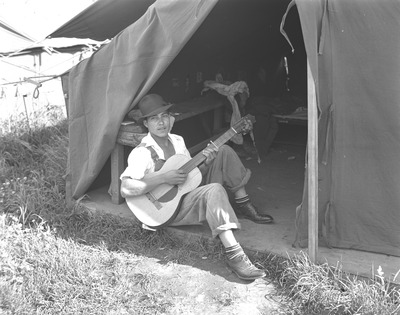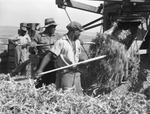View all images relating to International Workers
The federal government attempted to fill the void in the farming industry caused by the onset of World War II with American women, children, and elderly individuals, yet it still was not enough. In order to supplement these efforts, workers were called upon internationally.
By far, the largest population of international laborers working under the Farm Security Administration was composed of Mexicans participating in the Braceros program. The Braceros were brought into the U.S. under the Emergency Farm Labor Supply Program, which was an agreement signed into effect in late 1942 by the United States’ and Mexico’s respective governments and promised each laborer competitive wages, subsidized housing, and access to decently priced food.
While the agreement seemed like a chance for Mexicans to come into America and earn a decent living, institutional racism was widespread. Few FSA camps were pleasant, but the Braceros camps were typically the least hospitable, with little more than tents for shelter and few provisions outside of the absolute essentials. Although the FSA did ensure that meals were provided at reasonable prices, no thought was paid to what comprised a traditional Mexican diet, and, as a result, many of the Braceros disapproved of the food and some frequently refused to eat. These complaints could not even be shared at most camps, however, as they lacked interpreters.
Although the overwhelming majority of international laborers that came to the U.S. under the FSA and the Emergency Farm labor Service were from Mexico, other countries were also represented. Jamaica, for instance, had a strong population of workers in Oregon during this period, with fifty in Umatilla County alone in 1944. Regardless of the country they originated from, or how much credit they have received, the international workers that came to America to aid the Emergency Farm Labor Service were instrumental in keeping the crops alive and Americans fed.






